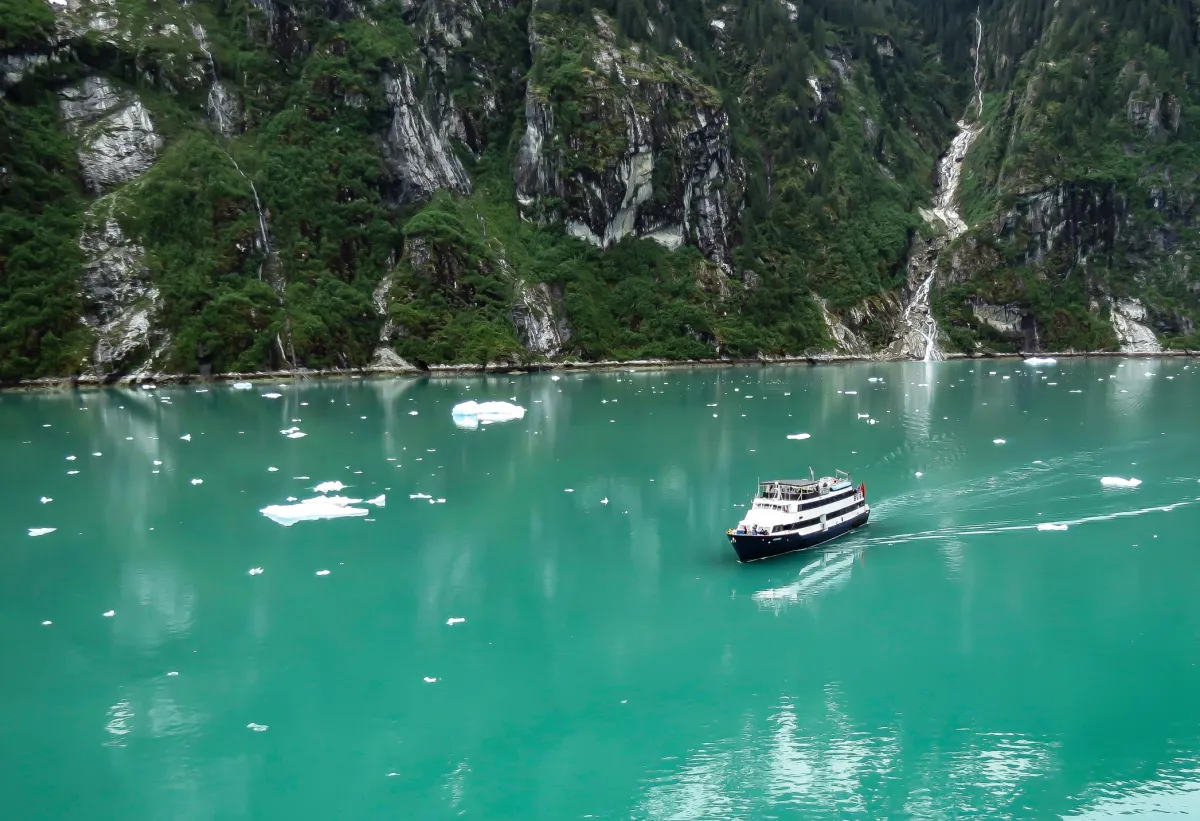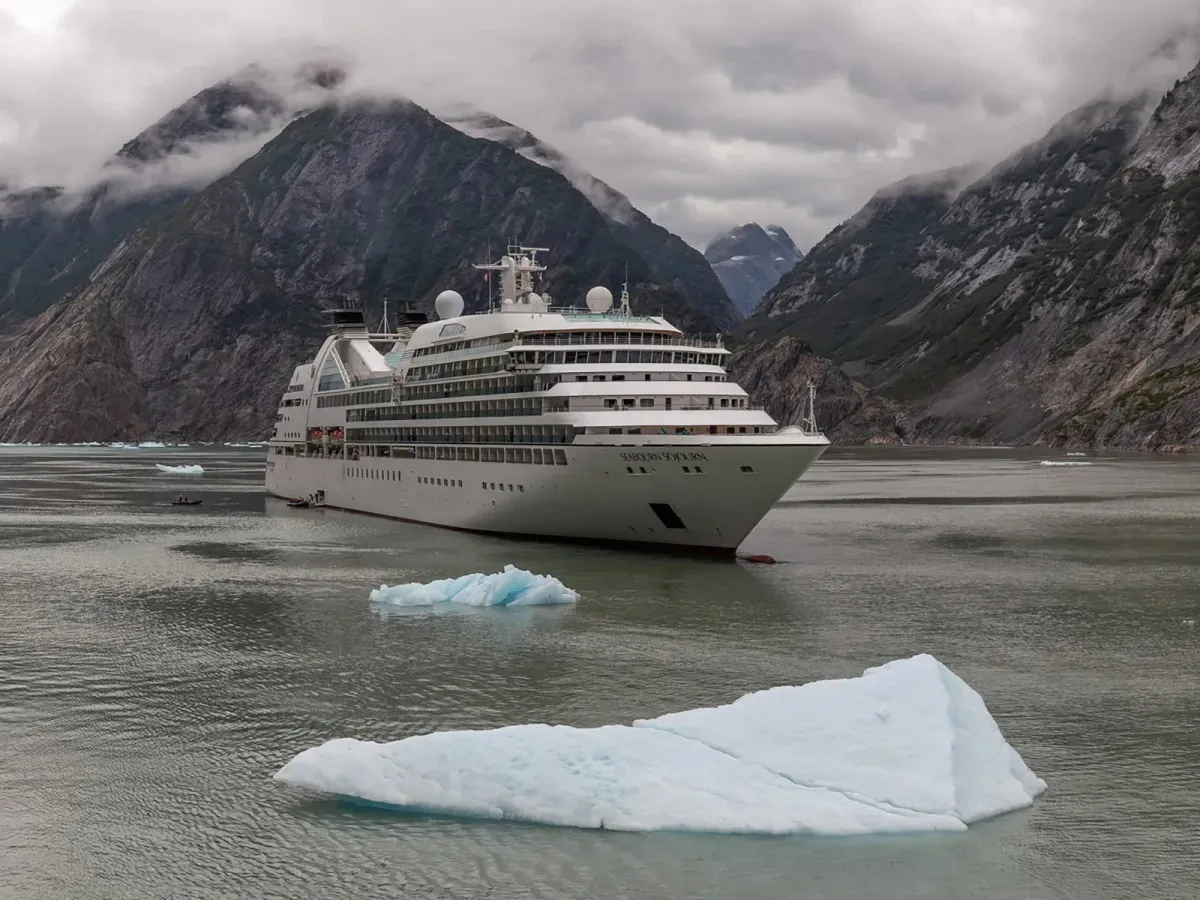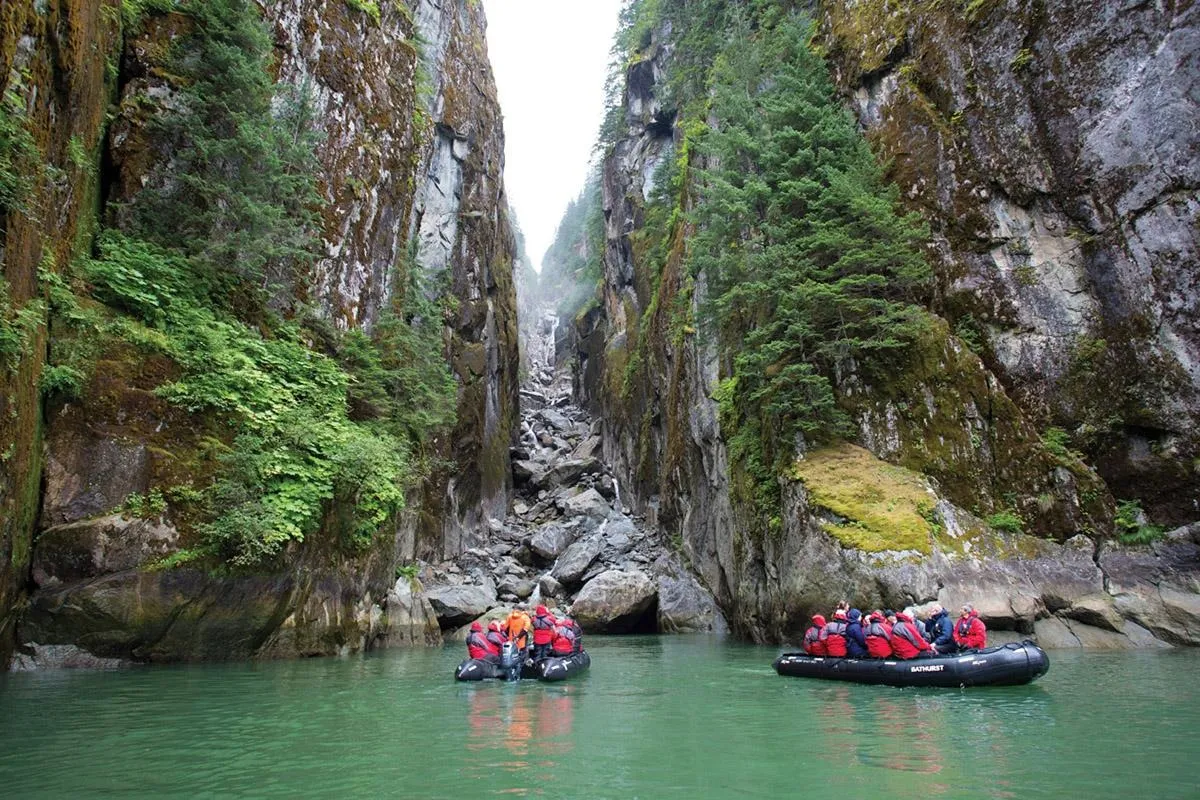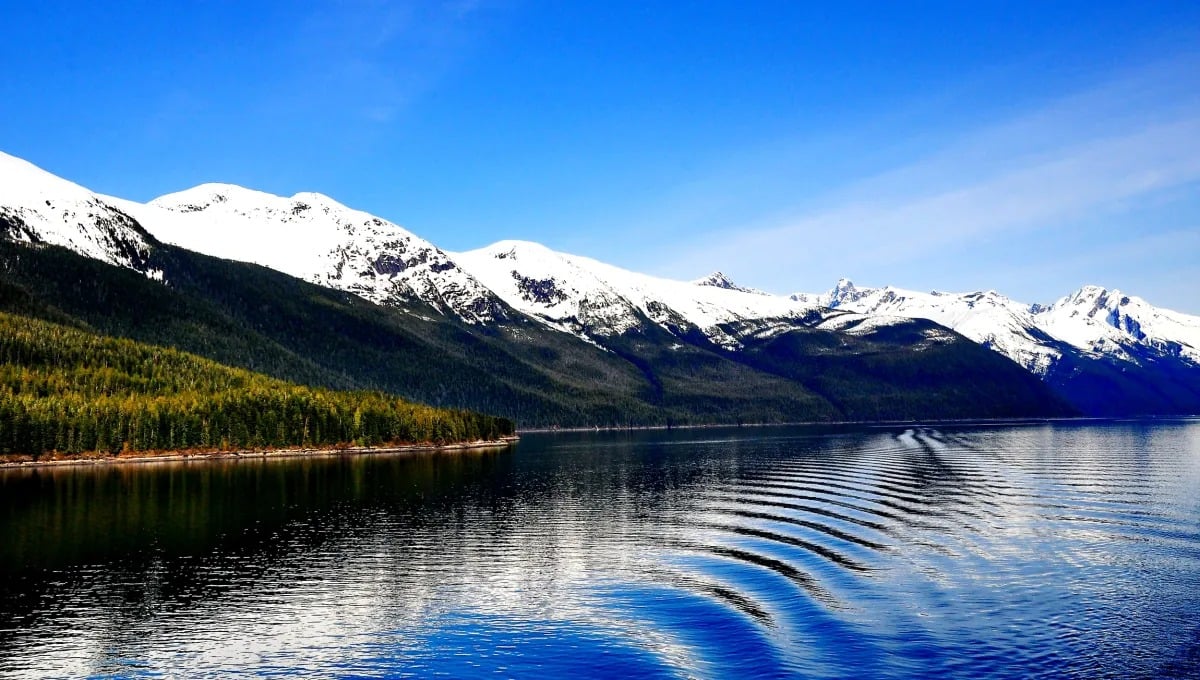
Cruising to Alaska is a must-do for many, and the increase in popularity of this northern destination has made way for tons of great ships to choose from. There is a huge range. Everything from small, intimate ships that carry 100 people to larger mega-ships that can hold more than 5,000 guests.
The main question for many is which is the best option for a dream cruise to Alaska? That depends on a lot of things like budget, itinerary, interests, and who you are cruising with. Do you want a more immersive experience? Or do you want a nice balance of excursions and a ship with plenty of onboard amenities and choices?
With so many options, it can be hard to figure out what to pick, but there is a ship for every cruiser.
Here is what you need to know about cruise ships sailing to Alaska, and the pros and cons of each option
Big versus small ships - what’s the difference?

How big is big when it comes to cruise ships? Large ships tend to start around 2,500 passengers, with mega-ships ranging from 3,500 all the way up to 7,000 people. Currently, the largest ships heading to Alaska include Royal Caribbean’s Quantum of the Seas and Ovation of the Seas, which both welcome up to 4,905 guests onboard. Princess Cruises and Norwegian Cruise Line also have ships that can handle more than 4,000 guests.
On the other hand, small ships also have quite a range. While many consider less than 1,000 small, there are some that only have a capacity for 100 guests. A completely different experience on each.
The number of passengers is not the only major difference between large and small ships. Amenities, onboard activities, itineraries, and costs can also be vastly different. Most often, the small ship experience costs more, while large ships can have among the best prices.
Big ships sailing to Alaska

If you are looking for a ship with lots of activities and amenities, major cruise lines like Carnival Cruise Line, Celebrity Cruises, Norwegian Cruise Line, Disney Cruise Line, Holland America Line, Princess Cruises, and Royal Caribbean all have large ships sailing to Alaska – meaning there Is plenty of choice among your favorites.
With these behemoth-sized modern sips, there is a range of cabins, from budget interior cabins to balconies, to high-end suites – something for every cruiser. They also come with a number of restaurant options, live shows, casinos, and spas. Kids and families enjoy a choice of pools, waterparks, sports, complimentary kids programs, slides, roller coasters, racetracks, and much more. There is no chance of getting bored on a sea day or in the evening on these ships. Family-friendly lines like Disney Cruise Line offer a wide range of kid-friendly excursions when in port, which can make planning a cruise even easier.
For those looking for a good deal, older ships are something to consider. They tend to attract couples and less families which may appeal to some. They don’t typically have the flashy bells and whistles of new ships like roller coasters, waterparks, go-carts, but rather offer a classic cruise experience to an incredible location. Mid-size options, anything more than 1,000-3,000 passengers, can be a great option.
Pros and cons of sailing big ships to Alaska

Pros:
- Larger cruise ships are among the most cost-effective, with some of the lowest cruise fares
- A great option for multi-generational cruisers or families who want a variety of activities
- More to do on sea days and evenings with live entertainment and activities
- Range of cabin options to suit a variety of budgets and preferences
- A wide range of complimentary kids' activities and programming
- Modern stabilizers and size can make for a smooth cruise for those who worry about seasickness
Cons:
- Large cruise ships do have more people, meaning it can feel crowded at times
- More standardized itineraries
- In-port restrictions can limit time in ports or require tendering, which can create lines and long wait times
- Less personalized/immersive experiences – it can be challenging to get to know the staff
- Larger ships have more people in excursions and activities. This can translate to longer wait times
Small ships sailing to Alaska

There are a number of smaller ships sailing to Alaska, offering a significant range even within this category. Among well-known cruise lines, Viking Cruises, the famed river cruise company, has made the foray into ocean cruises. They offer a compelling value proposition with an adult-only cruise space, ideal for couples. Viking Sea heads to Alaska with up to 1,000 passengers.
Upscale cruise lines are also well represented in Alaska with Seabourn Odyssey, which sails with around 450 guests, and they do Alaska like no other. They offer special benefits like an elite expedition team onboard and unique adventures that allow guests to use their kayaks and zodiacs. Regent Seven Seas Cruises is another luxury-focused cruise line owned by Norwegian Cruise Line. Guests can choose from a vast array of excursions that range from flightseeing, to a pub crawl, helicopter glacier trek, whale watching, dog sledding, gourmet cuisine, fishing, and wildlife adventures, just to name a few. A major perk of cruising with Regent is that they have unlimited shore excursions.
For the more adventurous cruiser, Lindblad Expeditions partners with National Geographic, sailing with 100 people for an incredibly personal and immersive experience while cruising to the Last Frontier.
Pros and Cons of sailing on small ships to Alaska

Pros:
- Personalized service and flexibility, especially with boats of 100 people, which can alter plans based on weather and local events
- Less time waiting in lines means more time on shore. One of the downsides to cruising on larger ships is the amount of waiting
- Small cruise lines often have experts and knowledge leaders onboard to provide a more immersive experience
- Higher level of service, with a better crew/passenger ratio
- Many small ships are all-inclusive, even shore excursions are included. No worry about extra costs
Cons:
- Cost is often higher with many of these cruise lines with a focus on service. Many have ocean-facing suites, which are incredible for the views but are a premium
- Smaller ships mean less onboard amenities such as restaurants, shows, spas etc. During sea days or bad weather – there is less to do fill your day.
- May be less appealing to families with kids' activities and specialized programming

